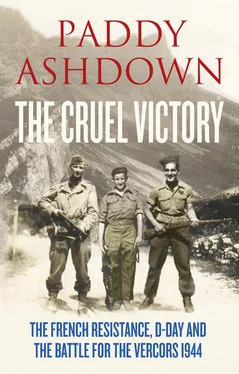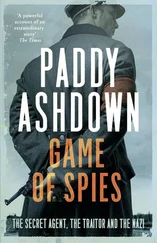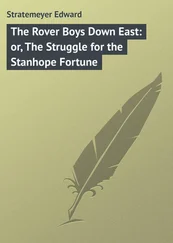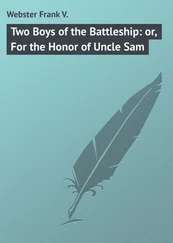Milice spy.
PUPIN, Aimé (MATHIEU)
Early Vercors Resistance leader.
RAYNAUD, Pierre (ALAIN)
An agent of Cammaerts and commander of a Drôme Maquis unit.
REY, Fabien (MARSEILLE and BLAIREAU)
Expert in and author of Maquisard guide to the the flora and fauna of the Vercors.
REY, Sylviane
Nurse and friend of Francis Cammaerts.
RITTER, Stefan
Commander No. 8 Company Reserve Gebirgsjäger Battalion II/98.
ROMANS-PETIT, Henri (ROMANS)
Resistance leader in the Jura.
ROUDET, Marcel (RAOUL)
Corrupt Lyon policeman who led his own ‘Raoul Maquis’.
SALLIER, Ferdinand (CHRISTOPHE)
Maquis leader in the west of the Vercors.
SAMUEL, Dr Eugène (JACQUES and RAVALEC)
Early founder of the Resistance movement in Villard-de-Lans.
SCHÄFER, Friedrich
Commander Kampfgruppe Schäfer.
SCHWEHR, Franz
Commander Kampfgruppe Schwehr.
SEEGER, Alfred
Commander Kampfgruppe Seeger.
SOUSTELLE, Jacques
Confidant of de Gaulle and head of the French Directorate for Intelligence and Special Forces.
STÜLPNAGEL, Carl-Heinrich
German military commander for all France.
TANANT, Pierre (LAROCHE)
Huet’s Chief of Staff.
THACKTHWAITE, Henry (PROCUREUR)
British member of the Union Mission.
TOURNISSA, Jean (PAQUEBOT)
Landing-ground expert sent in to build an airstrip at Vassieux.
ULLMAN, Henri (PHILIPPE)
Commander of Compagnie Philippe.
ULLMANN, Dr Marcel
Doctor in Saint-Martin and Grotte de la Luire.
VILLEMAREST, Pierre FAILLANT de (FRANTZ)
Maquis intelligence expert and later commander of the Groupe Vallier.
VINCENT, Gaston (AZUR and PIERRE)
OSS agent in Saint-Agnan.
VINCENT-BEAUME, André (Capt. VINCENT and SAMBO)
Head of Huet’s 2nd Bureau (intelligence).
WINTER, Anne
Nurse at the Grotte de la Luire.
ZABEL
Commander Kampfgruppe Zabel.
ZELLER, Henri (FAISCEAU and JOSEPH)
Chief of Resistance in south-east France.
*Aliases in brackets.
*There are several versions of this name, including Calke and Calk. I have used the one given in the journal of the 11th Cuirassiers and Robert Bennes’ memoirs.
Map 1: The Vercors
Map 2: Occupied Territories 1942
Map 3: Camps of the Vercors 1943
Map 4: Drop Sites
Map 5: German Operations 1944
Map 6: Options for the Southern Invasion
Map 7: The Battle of Saint-Nizier
Map 8: Huet’s Dispositions and Early German Probes
Map 9: Pflaum’s Plan
Map 10: The Battle for Vassieux
Map 11: Battle of the Passes
Map 12: The Battle of Valchevrière
Map 13: Flight and Refuge
Above the city of Grenoble, at Saint-Nizier-du-Moucherotte, the sun rose into a perfect sky at 04.48 on the morning of 13 June 1944. For the 700 young men who had spent the previous night under the summer stars, strung out along a 3-kilometre defensive line on the Charvet ridge, it bought a welcome warmth against the damp early-morning chill. Bees hummed among the flowers and grasses and everywhere little birds darted from clump to bush, seeking out insects. High above the early lark let down her string of liquid notes. Below them, the Grésivaudan valley, bounded by the Chartreuse massif on one side and the Bauges and Oisans ranges on the other, glowed with the colours of high summer. And in the distance, like a great white whale, the snow-covered hump-back of Mont Blanc sparkled in the sunlight. In normal times this would have been good day for lovers – and country walks – and family picnics. But this was not a normal time – and this would not be a normal day.
Modern-day soldiers almost always fight and die miles from home. But these young men – many little more than boys – looked down that morning to see their home city laid out as plain as a street map. They knew its every nook and cranny. There was the park where they had played football with friends. There the school they had attended. There the square in which they had hung around, watching the girls go by. There the café where they had met a lover. And there the rented flat where wives and children still slept this summer morning, as they lay out in the dew-soaked grass, waiting for the enemy to come.
Whatever politicians say, soldiers do not die for their country. They die, mostly, for the man next to them – the comrade they know will lay down his life for them. And for whom they, too, will lay down theirs in their turn – if required to do so. But most of these young Maquisards lying out this warm summer’s morning on the Charvet hill, in the same clothes – even the same white shirts – in which they had left home only days previously, were different. Young, naive, unpractised in the use of arms, inexperienced in the terrors of war, they had come to the plateau out of a genuine sense of patriotism mixed with romance and adventure. Their youthful enthusiasm remained undimmed by the dull, mind-numbing routines of the professional soldier. How were they to know that their proudly acquired Sten guns would be little more than pop-guns against the steel-clad might and majesty of the world’s finest army, now massing invisibly below them? How were they to know, plucked so suddenly out of comfortable city lives, what it would be like to watch a friend cough out his life’s blood on the grass next to them? These things were literally beyond their imaginings.
And so, in ways unknown to the common soldier, they lay there, waiting for their enemy – apprehensively of course – but in their innocence also proudly, bravely, determinedly, ready to carry out what they believed was a glorious duty on behalf of their long-oppressed country. ‘It’s the morning of Austerlitz!’ declared one, referring to Napoleon’s great victory over the Austrians in 1805.
Suddenly, there was a new noise punctuating the early-morning hum of the city, drifting up to them on a light summer breeze. It was the insistent thump of a German heavy machine gun somewhere in the woods and meadows below them. Little flowers of dirt started sprouting among them in the long grass where they lay. Looking to the foot of the hill, they could make out tiny dots of field grey spreading out as they started to move slowly up towards them.
‘They’re coming!’ someone shouted.
1
THE VERCORS BEFORE THE VERCORS
For those who live around the Vercors massif – from the ancient city of Grenoble lying close beneath its north-eastern point to the vineyards of Valence scattered around its south-western slopes – the forbidding cliffs of the plateau are the ramparts of another country. To them, this is not just a mountain. It is also a state of mind. Even when hidden behind a curtain of summer rain or with its summits covered by the swirling clouds of a winter tempest, the great plateau is still there – offering something different from the drudgery and oppressions of ordinary life down below. Best of all, on still, deep-winter days, when the cold drags the clouds down to the valleys, up there on the Vercors looking down on the sea of cloud, all is brilliant sunshine, deep-blue skies, virgin snow and a horizon crowded with the shimmering peaks of the Alps.
Today, this is a place of summer escape and winter exhilaration. But its older reputation was as a place of hard living and of refuge from retribution and repression.
The historical importance of the Vercors lies in its strategic position dominating the two major transport corridors of this part of France: the Route Napoleon which passes almost in the shadow of the plateau’s eastern wall and the valley of the River Rhône, which flows through Valence some 15 kilometres away from its south-western shoulder.
Читать дальше












